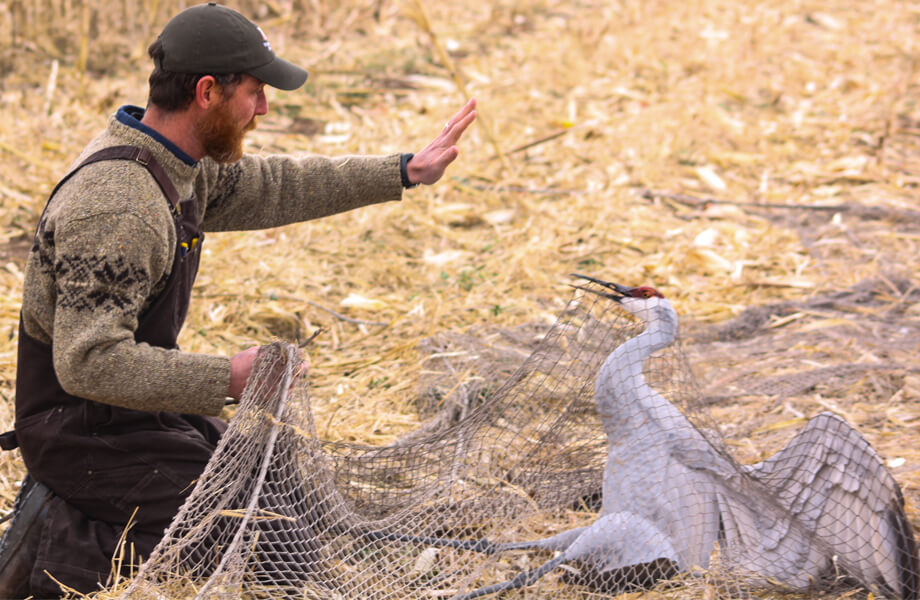In Texas, Technology Guides Redhead Conservation
Dan Collins is as much a geographer as he is a wildlife biologist.
Avian fauna are his forte. As a scientist in the U.S. Fish and Wildlife Service's Division of Migratory Birds in Albuquerque, New Mexico, Collins uses remote-sensing tools to learn more about Redheads' movements in south Texas. That data — from satellites, GPS, and Doppler radar — help wildlife managers make smart conservation decisions.

Remote-sensing tools are providing more information about the movements of Redheads along the Texas coast. Photo: Robert L. Kothenbeutel/Shutterstock
Knowing the array of habitats the bird frequents during its winter sojourns is key. Eighty percent of all North American Redheads spend their winters along the lower Gulf Coast of Texas in an area known as the Laguna Madre.
The birds have an affinity for areas that have fresh water situated near salty shores. In the Laguna they feed on shoalgrass and then fly inland each day to purge excess salts in the freshwater ponds. (Like most birds that feed in saltwater, Redheads have a salt gland near the eye that excretes excess salts ingested while feeding.)
Duck Data Tell the Story
For Collins, who holds three degrees in wildlife management and biology, birds are a way of life. He hunts them, and he studies them: In his office, two computer monitors show spreadsheets and maps with real-time satellite imagery — all duck data.

Dan Collins, a scientist with the U.S. Fish and Wildlife Service's Division of Migratory Birds, in the field with a Sandhill Crane. Photo courtesy of U.S. Fish and Wildlife Service.
The map looks like the tip of Texas scattered with blue dots. But these dots tell a story. Superimposed with data from the ground, the dots designate types of waterfowl habitat: freshwater lagoons; salt marshes; and fields, some studded with wind turbines. Each dot represents a Redhead caught in a moment in time, sending a signal into space to a satellite.
The satellite relays the information back to the ground for Collins and collaborating researchers at Texas A&M University – Kingsville to see. It's the time and space between each data point that reveal what ducks do on their winter grounds.
Tiny solar cells charge the small transmitters attached to ducks. They need four hours of sunlight each week to operate effectively. The tags emit signals very much like the GPS function on a smartphone. But these tags have to endure the rigors of flight as well as water pressure, since Redheads dive to find food.
Wind Turbines, at a Price
The tags aren't cheap – about $3,700 apiece – so birds are not tagged en masse. But the quality of the information is worth the expense.
Having virtually followed Redheads for a season, the data show the birds have an aversion to wind turbines.
“The turbines affect habitat use," Collins says. "They seem to displace birds," he says, and that could lead to birds leaving their wintering habitat in poorer condition than when they arrived.

Satellite data reveal that Redheads have an aversion to wind turbines. Photo: pau2000/Shutterstock
For Redheads bound for summer breeding grounds in Canada, the Dakotas, and Montana, arriving less fit could affect the birds' success on the nest.
More Data, More Answers
While only large males were tagged in this present research — birds that could physically carry the tags — newer, smaller tags could soon allow Collins and his collaborators to tag more birds, including females. With more data, the picture of habitat use should become clearer.
For now, using the data Collins has acquired so far, wildlife managers are better equipped to guide waterfowl conservation and seek answers to new questions.

Future research could provide scientists with even more information about Redheads' habitat. Photo: Arina P. Habich/Shutterstock
This much is clear already, Collins says.
“The data revealed what areas are important for conservation outside of the wind farms,” he says, “and where best to engage our partners — where habitat enhancement and restoration would be most beneficial for the birds going forward.”
(Read more about how data guide bird conservation.)
Craig Springer works for the U.S. Fish and Wildlife Service in Albuquerque, New Mexico.


















































